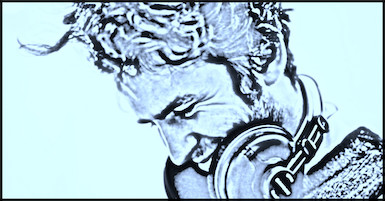 Let’s say you’re in love with someone and you want to let that person know how you feel. You could simply walk up to them and say, “I love you.” That might work. Or you could make an effort to create the right surroundings: The two of you take a walk along the beach, holding hands on a summer evening, a light mist floating in the air. Then, as the moon rises and hangs like a giant disco ball in the sky, you whisper, “I love you.”
Let’s say you’re in love with someone and you want to let that person know how you feel. You could simply walk up to them and say, “I love you.” That might work. Or you could make an effort to create the right surroundings: The two of you take a walk along the beach, holding hands on a summer evening, a light mist floating in the air. Then, as the moon rises and hangs like a giant disco ball in the sky, you whisper, “I love you.”
Without a doubt, the second option seems more likely to convey your I-love-you message convincingly (except for the disco ball). And while it’s not guaranteed to make the other person love you in return, as a songwriter it’s definitely going to give your audience a better chance to feel what you’re feeling and believe you really are in love! And that’s what songs are all about.
When you give your listeners the details of an experience in a way they can see, feel, and touch, you draw them into the experience: they picture the beach at sunset, feel the warm air, and hear the words that are spoken. They’re involved in your situation without even thinking about it. Using the physical senses – sight, sound, smell, touch, taste – to convey emotions is much, MUCH more effective than simply telling your audience what you think or feel. Here’s how you do it.


 Let’s say you’re in love with someone and you want to let that person know how you feel. You could simply walk up to them and say, “I love you.” That might work. Or you could make an effort to create the right surroundings: The two of you take a walk along the beach, holding hands on a summer evening, a light mist floating in the air. Then, as the moon rises and hangs like a giant disco ball in the sky, you whisper, “I love you.”
Let’s say you’re in love with someone and you want to let that person know how you feel. You could simply walk up to them and say, “I love you.” That might work. Or you could make an effort to create the right surroundings: The two of you take a walk along the beach, holding hands on a summer evening, a light mist floating in the air. Then, as the moon rises and hangs like a giant disco ball in the sky, you whisper, “I love you.”
